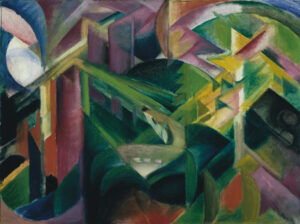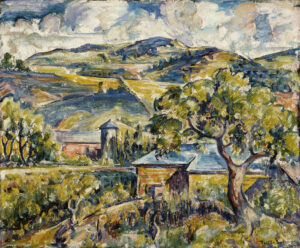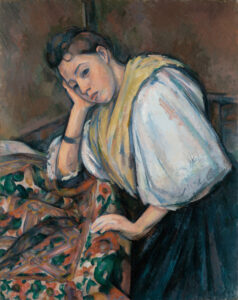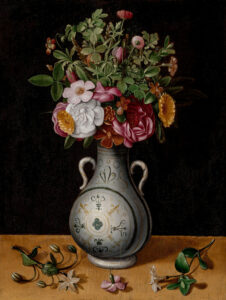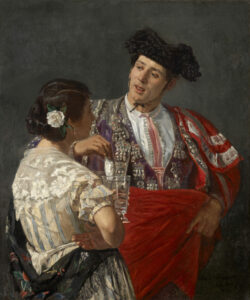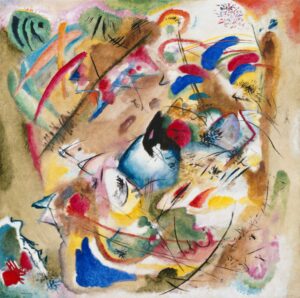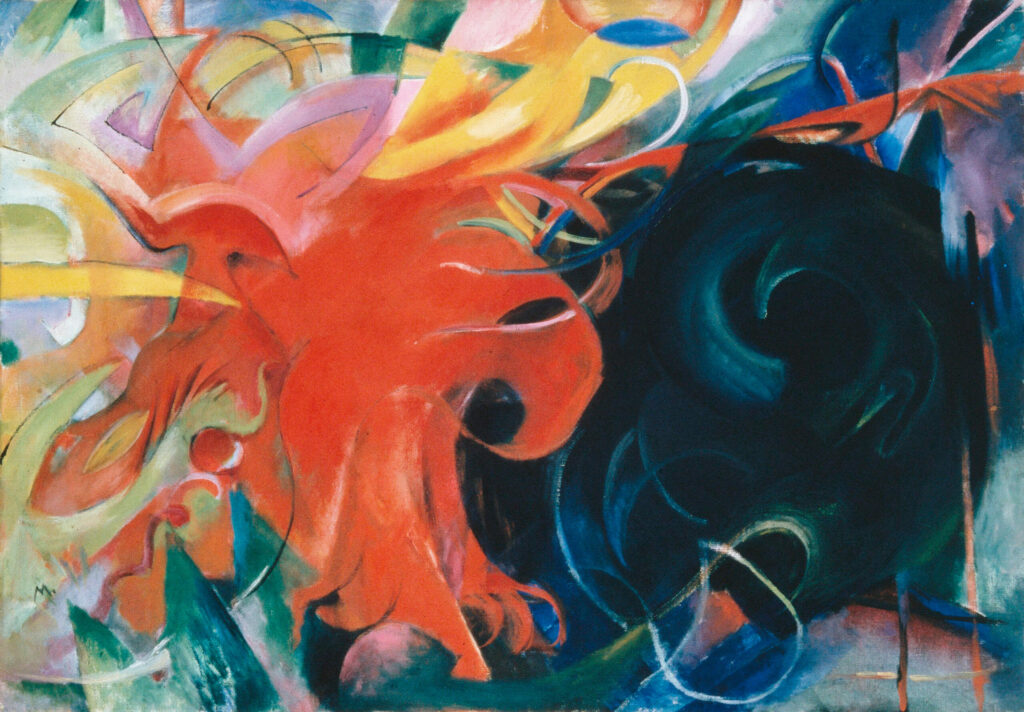
Fighting Forms (1914) by Franz Marc perfectly illustrates the evolution of German Expressionist art toward pure abstraction.
This work reveals a progressive departure from the animal figuration that characterized the artist’s early creations. Here, Marc transposes conflict into a plastic language where organic forms intertwine in a chromatic whirlwind. Primary colors clash in a dynamic composition that evokes primitive and cosmic violence. The fluid contours and colored transparencies create an intense visual rhythm, bearing witness to the influence of the Futurist movement on Marc’s aesthetic. This painting, executed shortly before the artist’s mobilization, tragically foreshadows the upheavals of the Great War. The work transcends mere representation to reach a spiritual and philosophical dimension on the nature of universal conflict.
Further information
- Franz Marc, Fighting Forms, 1914
- 91 × 131.5 cm
- Pinakothek der Moderne, Munich, Bavarian State Painting Collections – Modern Art Collection
- https://www.sammlung.pinakothek.de/de/artwork/8MLv29lLz3
Franz Marc (1880-1916) embodies the tragic figure of the European avant-garde cut down by war. Co-founder of the Der Blaue Reiter group with Kandinsky in 1911, he revolutionized German art by developing an aesthetic in which the animal becomes the vehicle for a modern spirituality. His color theory—blue as masculine and spiritual, yellow as feminine and sensual, red as material and violent—had a lasting influence on Expressionism. Marc drew his inspiration from primitive arts and pantheistic philosophy. His famous blue horses and red deer express his quest for a pure art, freed from human corruption. A voluntary enlistee in 1914 despite his initial pacifism, he perished at Verdun in 1916, leaving behind a brilliant body of work spanning only fifteen years of creation, now preserved in the world’s greatest museums.

